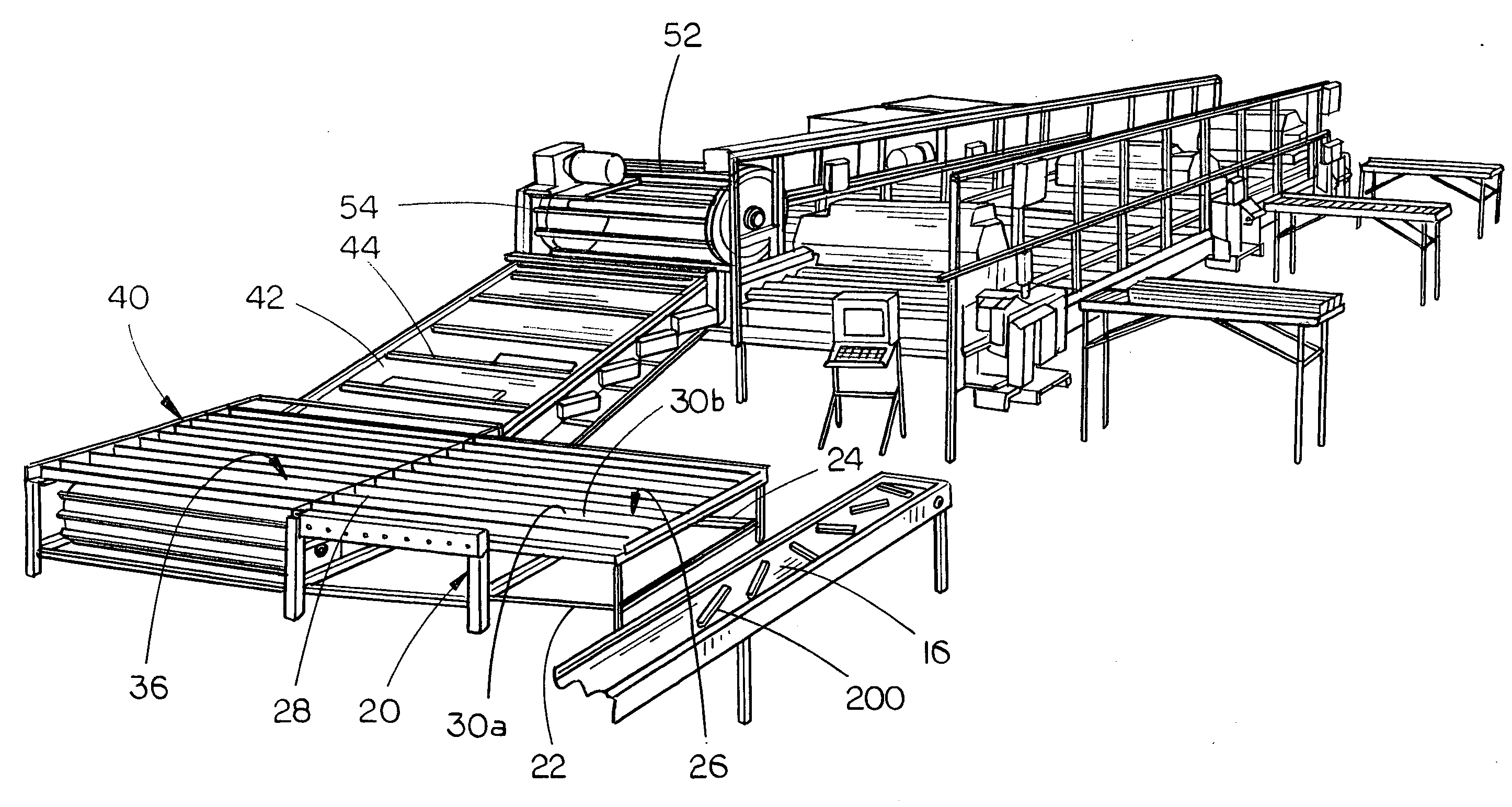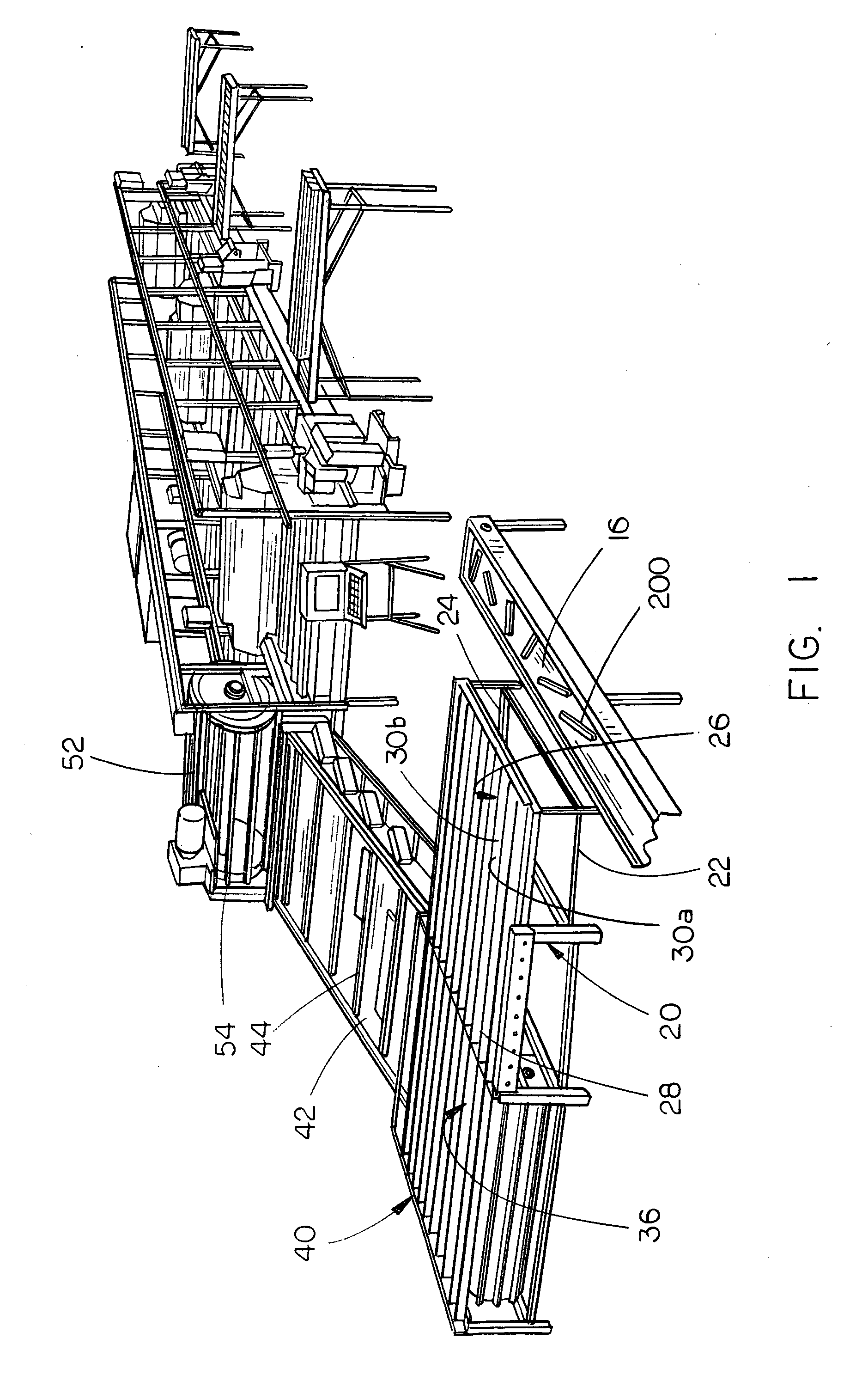Selection and bundling method for random length materials
a random length and material technology, applied in the field of random length material selection and bundling, can solve the problems of no way of determining which piece, and the bundle is not as secure when bound, so as to improve the user's bottom line, increase the efficiency of the process and the efficiency of the operation of the apparatus, and save labor and expense. large
- Summary
- Abstract
- Description
- Claims
- Application Information
AI Technical Summary
Benefits of technology
Problems solved by technology
Method used
Image
Examples
Embodiment Construction
[0036]The selection and bundling apparatus 10 of the present invention is shown best in FIGS. 1-16 as including an infeed section 20, a measurement section 40, a sorting section 60, a row accumulating section 80, a bundling section 100 including one or more bundling devices 102 which further is operatively associated with a layer inverting device 120, and a vacuum suction transport carriage 140 operative to transport the accumulated rows of boards from the accumulator rows to the bundling section 100.
[0037]Referring now to FIGS. 1 and 2, infeed section 20 includes a support frame 22 supporting at least one inflow conveyor belt 24 having a forward end 26 and a rearward end 28. Mounted atop the conveyor belt are guide rails 30a and 30b which extend in convergent configuration to one another to guide the incoming board 200 down the inflow conveyor belt 24 towards rearward end 28 thereof. Preferably, the inflow conveyor belt 24 is operated at a speed which carries the boards 200 at a ra...
PUM
 Login to View More
Login to View More Abstract
Description
Claims
Application Information
 Login to View More
Login to View More - R&D
- Intellectual Property
- Life Sciences
- Materials
- Tech Scout
- Unparalleled Data Quality
- Higher Quality Content
- 60% Fewer Hallucinations
Browse by: Latest US Patents, China's latest patents, Technical Efficacy Thesaurus, Application Domain, Technology Topic, Popular Technical Reports.
© 2025 PatSnap. All rights reserved.Legal|Privacy policy|Modern Slavery Act Transparency Statement|Sitemap|About US| Contact US: help@patsnap.com



